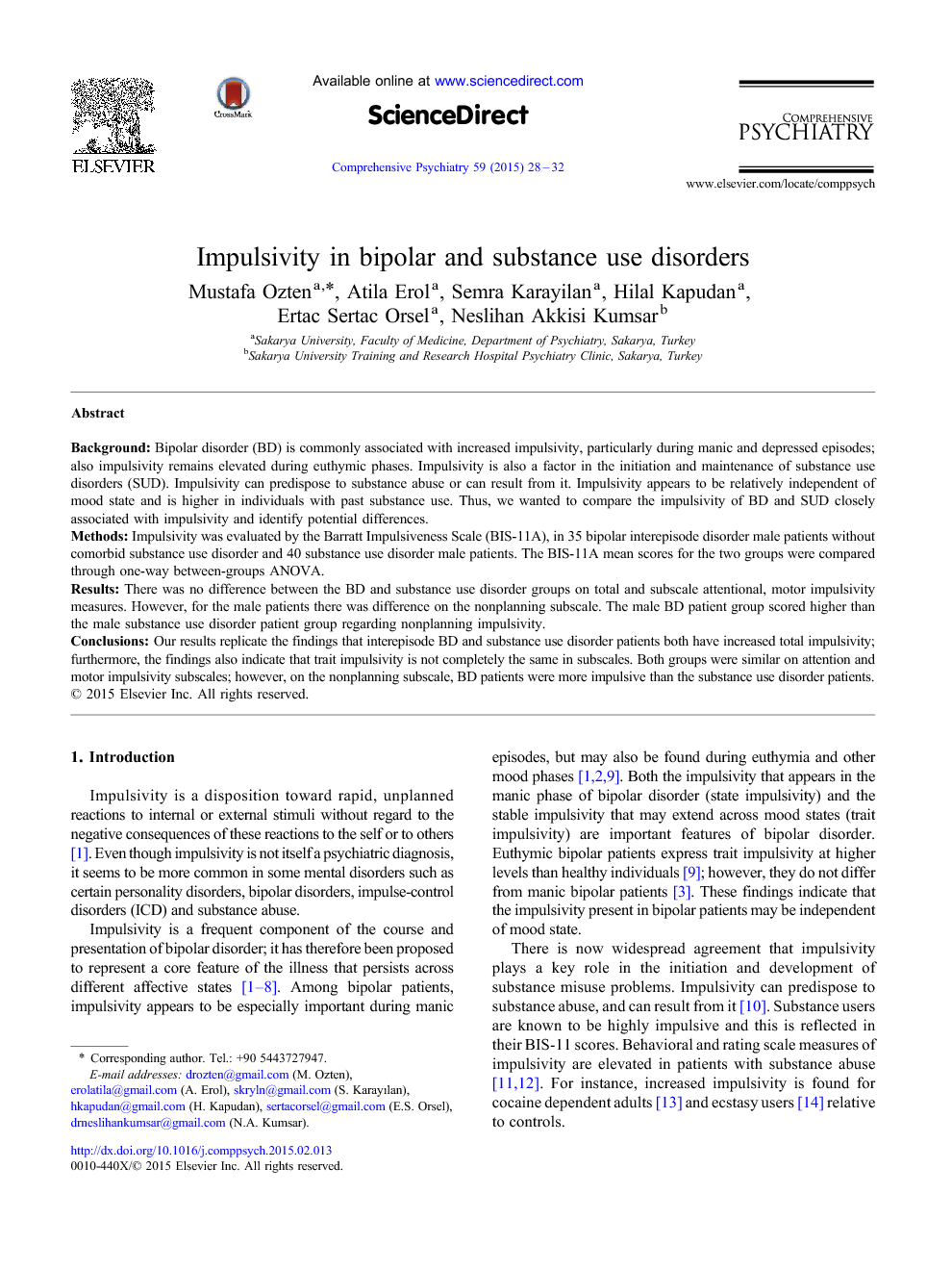ترجمه فارسی عنوان مقاله
تکانشگری در دو قطبی و اختلالات مصرف مواد
عنوان انگلیسی
Impulsivity in bipolar and substance use disorders
| کد مقاله | سال انتشار | تعداد صفحات مقاله انگلیسی |
|---|---|---|
| 33982 | 2015 | 5 صفحه PDF |
منبع

Publisher : Elsevier - Science Direct (الزویر - ساینس دایرکت)
Journal : Comprehensive Psychiatry, Volume 59, May 2015, Pages 28–32
ترجمه کلمات کلیدی
تکانشگری - دو قطبی - اختلالات مصرف مواد -
کلمات کلیدی انگلیسی
Impulsivity ,bipolar ,substance ,disorders,

